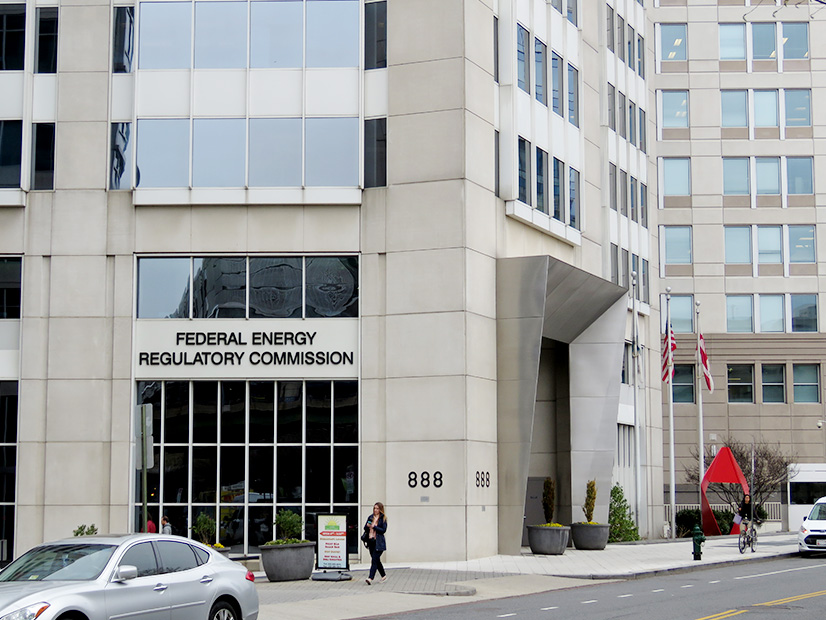Common problems in utilities’ protection system testing and commissioning (PSC) programs create a risk of “significant adverse impact on misoperation rates” in the bulk power system, according to a survey conducted earlier this year by FERC and NERC.
Staff from FERC, NERC and the regional entities conducted the survey as part of a larger examination of PSC programs and procedures, initiated last year after a review of data from the Misoperation Information Data Analysis System (MIDAS) concluded that 18-36% of misoperations in MIDAS on Jan. 1, 2019, were the result of issues that should have been detected through registered entities’ PSC programs. The joint review “was not a compliance or enforcement initiative,” but rather was intended to identify “opportunities for improvement and … best practices.”
The survey covered eight registered entities “with diverse [BPS] geographical locations,” chosen based on misoperation rates — specifically, seeking entities with either a relatively high or relatively low rate compared with other utilities in the region. Staff also added an independent contractor that assists utilities with protection system installation and commissioning.
Results were presented in a joint paper issued last week by NERC and FERC. Survey questions were based on the Institute of Electrical and Electronics Engineers’ (IEEE) WG I-25 guide to protection system commissioning testing practices, and covered five key elements of each participant’s PSC program:
- Stated goals and objectives
- Well-defined plans to perform commissioning projects
- Clearly identified lines of responsibility
- Authority given to reasonable parties
- Feedback methods to improve the plan
Respondents were first asked whether they had a formal PSC program. All did except one, but none of the programs were “as comprehensive as the IEEE WG I-25 guide recommends” because they did not maintain a centralized document describing all five key elements. Thus, even those participants who claimed their programs contained every element did not have a document that all personnel could reference. FERC and NERC identified this as an opportunity for improvement and urged all entities to formally document their PSC programs.
The survey did find that all the entities documented the goals and objectives of their PSC programs “in some form,” though in the case of three this was not done in a document; instead, the goals and objectives were “embedded … in their equipment commissioning processes.” The report’s authors saw this approach as falling short of the IEEE guide’s recommendations and suggested that entities incorporate the goals and objectives into their formal PSC program documentation to provide employees “clear direction.”
Results on the next question were more to FERC and NERC’s liking, as all participants had a plan for commissioning objects. The form of these plans varied, along with the content; authors noted that most of the PSC programs would benefit from “greater detail and specifics for performing commissioning projects.”
One utility garnered special praise in the report for including commission testing plans specifying, for every project, the depth, scope, type of equipment involved, and level of complexity. Staff did not urge this amount of detail for all registered entities, but they did recommend that utilities at least review their programs to determine if more detail would help.
The report’s authors were also pleased overall with respondents’ commitment to provide “clearly identified lines of responsibility” in the form of “organization charts and/or lists of employee positions for their PSC programs and processes.” Every entity surveyed specified each position’s role in the process, along with training and certification requirements.
However, the training and certification varied from “well-documented training provided in-house by the entity” to on-the-job training, with proficiency judged based on the number of years on the job. FERC and NERC recommended that participants improve personnel training rather than relying on seniority.
Regarding the provision of authority to responsible parties, the survey found that all but one participant used third-party contractors to perform PSC testing, which the authors found concerning since “inadequate commission testing by third-party contractors” has been linked to many protection system misoperations. One entity reported that it did all commission testing with the same contractor, which in turn had that utility as its sole client, an arrangement that “effectively mitigated the … issues with third-party contractors by mimicking the relationship that an entity would have with an internal department.”
Finally, the authors noted with approval that all participants had feedback mechanisms to identify areas for improvement. Beyond the creation of lessons-learned documents, which all respondents did, various methods were employed for identifying issues. Some entities used job journals or field issues logs, while others used a shared database to store and spread the information.
“No matter how good the protection system design or commissioning phases are, there may be issues that arise, or shortcomings found in the process,” the report said. “Correcting these issues or shortcomings and communicating the remediation to the proper groups is paramount to provide continuous improvement to the PSC program.”



